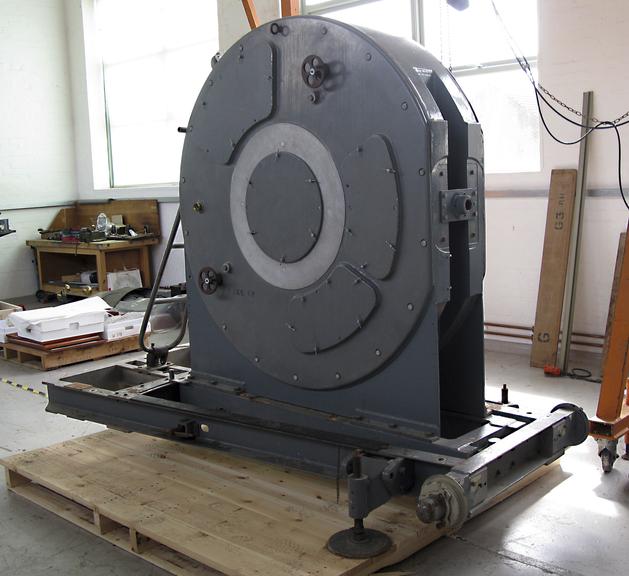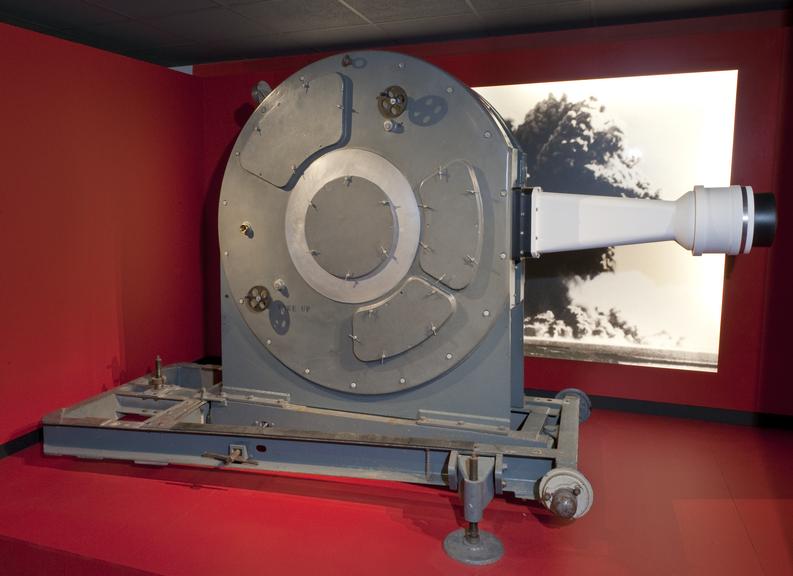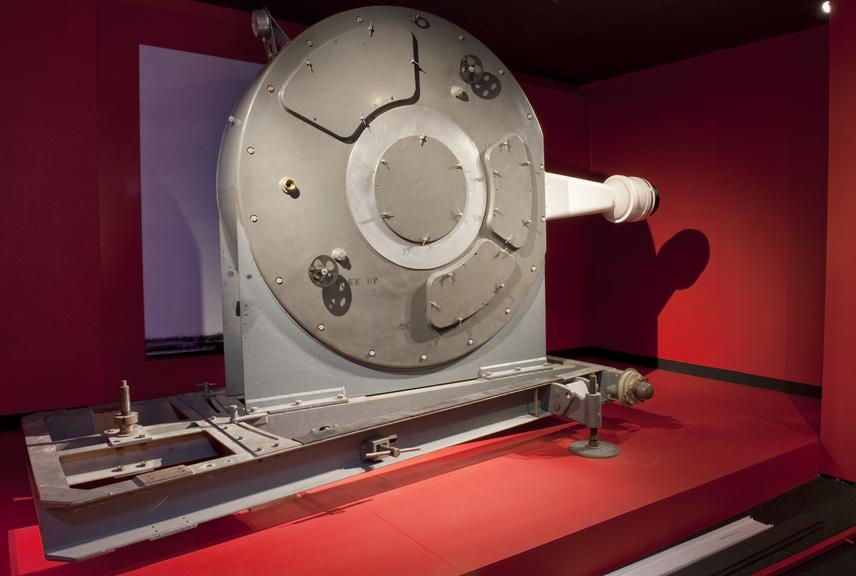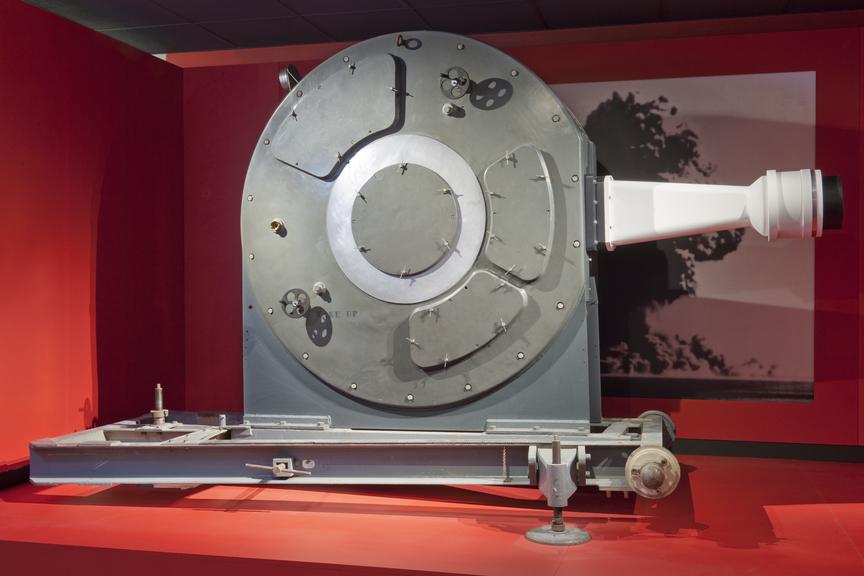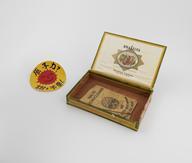C4 Rotating Mirror High Speed Camera bolted to rectangular wheeled steel frame - wheels missing, and detachable handle, by the Atomic Weapons Research Establishment (A.W.R.E), Aldermaston, Hampshire, 1950-1959.
C4 cameras were developed by the Atomic Weapons Research Establishment (A.W.R.E) during the 1950s to support the development of Britain’s atomic programme. The camera was designed to capture the first nanoseconds after detonation and was deployed in Britain’s nuclear tests in Australia.
Between 1955 and 1958 a total of 21 atmospheric nuclear tests were orchestrated in Australia and at islands in the Pacific Ocean and the programme continued with minor trials until 1968. This camera captured images of the destruction and power, images which would continue to haunt the world for generations.
The design of the C4 was specific to the task of capturing split second explosions. Most importantly the camera had to run continuously. In order to satisfy this requirement the film was cut into a loop at remained fixed in a drum around the arc of the camera. 140 lenses run parallel to the film in an arc sweeping around the drum. Rather than spinning the film a mirror, with dimensions 100mm by 62mm, situated in the centre of the drum rotates at high speed. As a result the mirror directs the light through the individual lenses, which in turn focuses and exposes the image onto the film beneath. A complete rotation would take one millisecond resulting in 140 photographs recording the high speed event. In order to prevent double exposure a trigger was set to detonate a shatter shutter which disperses the light entering the camera.
Although the explosion was over in seconds the time and effort required to prepare the C4 camera was immense. To ensure the rotating mirror span at 10,000s rotations per minute the drum of the camera had to be evacuated. It would have taken over 6 hours to create the ideal vacuum. If this wasn’t strenuous enough the tests were situated in the Australian outback in the middle of desert like terrain. Finally, the experiment was assembled in complete darkness. Spatial awareness and patience was required to cut, load and develop the film without unwanted exposure.
After the A.W.R.E had finished using the camera in the mid 1960s it was donated to Cambridge University, where the camera was used to film initiation mechanisms of solid and liquid explosives at the Cavendish Laboratory until 2012.





